If you want to add some of the coolest, most unusual spring blooming bulbs to your flowerbeds, then you need to be planting allium bulbs this fall!
While these unique perennials might not be as commonplace as other fall planted bulbs like tulips and daffodils, can they ever light up your landscape with some of the most beautiful and interesting blooms around.
Allium bulbs are a part of the chive family and are considered to be ornamental onions. Because of this, they have a slight oniony scent which makes them highly pest resistant. This, of course, is a huge benefit over most other fall-planted bulbs that routinely get dug up by deer, squirrels and chipmunks.
But allium brings so much more to the table than chives! Traditional chive plants feature dainty little puffball blooms. However, the blooms of allium plants have gigantic spheres that form on tall commanding stems. And, they come in a variety of colors and bloom sizes that can add tons of interest to your gardening space.
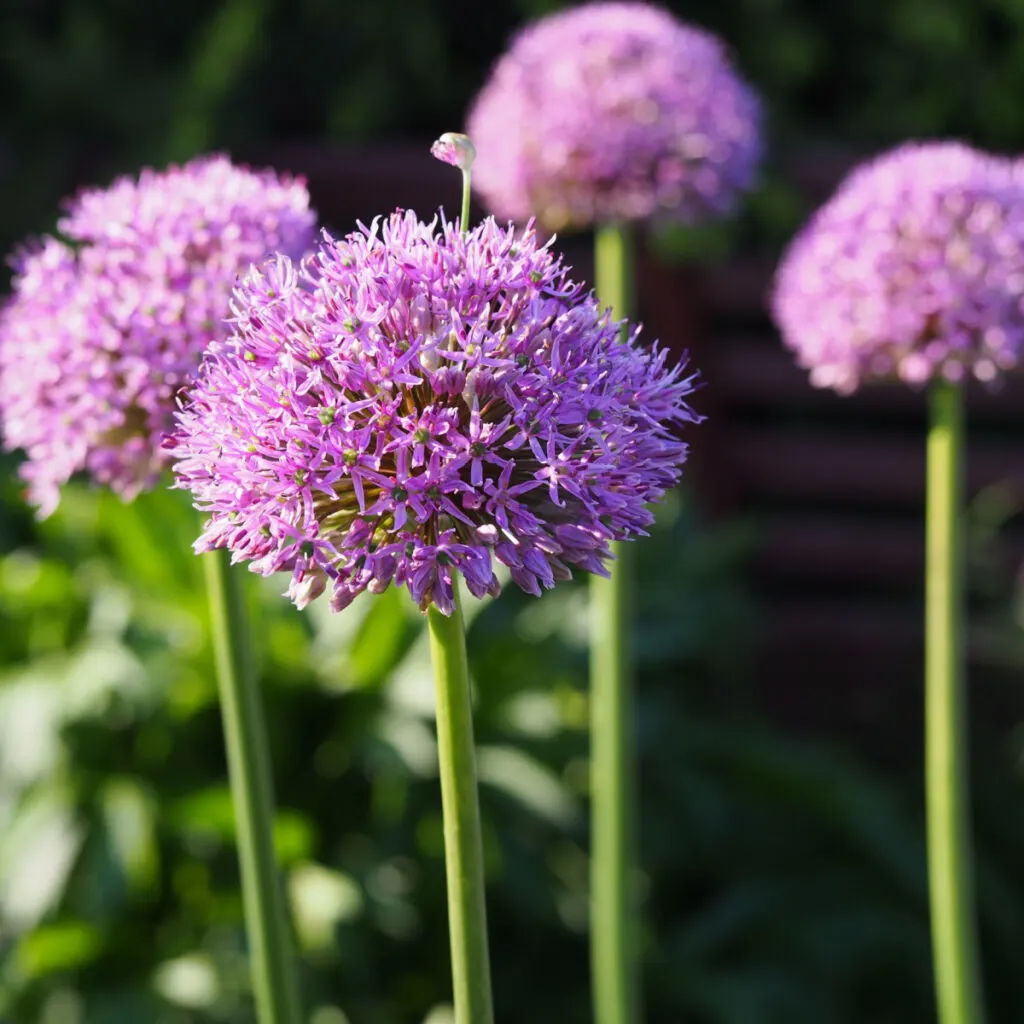
In addition, their colorful blooms make them perfect for attracting all sorts of pollinators. From hummingbirds to butterflies, bees and more, you’ll have no problem bringing in loads of helpful insects when you have allium growing on your property.
And if all of those advantages weren’t enough, allium is a hardy perennial bulb. So after just one planting, they will continue to return for multiple years!
How To Plant Allium Bulbs In The Fall
Allium has a hardiness growing zone of 4-10. There are actually over 700 different varieties of allium bulbs to choose from. They can range in sizes from 6 inches in height – all the way up to 5 feet tall. (Affiliate Product Link: Gladiator Allium Bulb)
Their purple, pink, white, or blue blooms typically appear later in the springtime after many of the other fall-planted bulbs begin to fade. They truly are a great way to extend your spring flower blooming season until your summer flowers are ready to show.
Soil Requirements for Allium Bulbs
Allium bulbs prefer soil that is very fertile and even more importantly, well draining. The bulbs are very susceptible to rotting if you plant them in low-lying areas that constantly have wet and heavy soil.
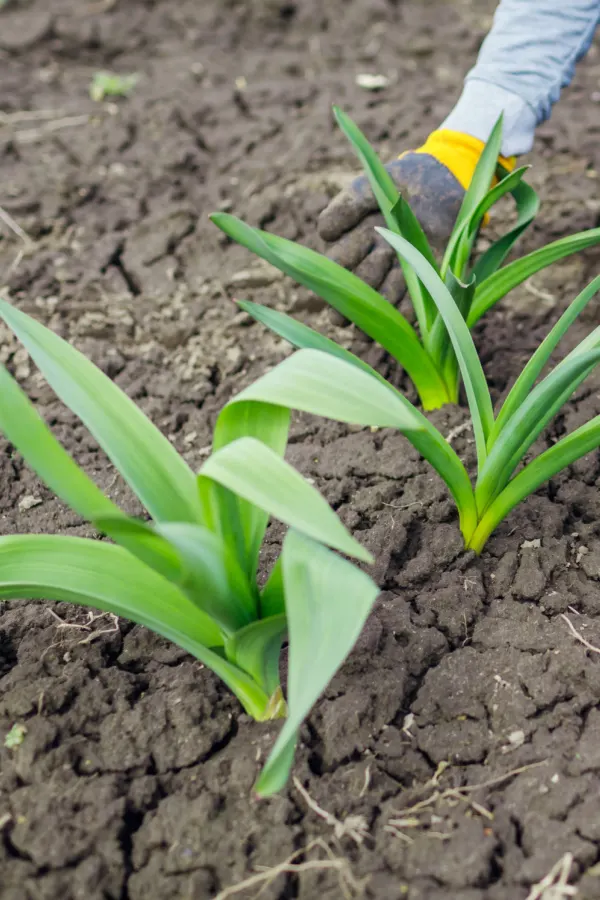
But the good news is that it’s easy to give them exactly what they need at planting time. For starters, allium bulbs love compost. Compost not only helps improve drainage for the bulbs to prevent rot, it also give them the perfect dose of vital nutrients.
If your soil is overly clay-like and drains poorly, in addition to compost, you can add sand or gravel to the planting hole. Both materials will help aid in drainage and keep bulbs from rotting out during heavy fall rains.
When To Plant – Planting Allium Bulb In The Fall
The best time for planting allium bulbs is in mid to late fall. This is when the soil temperature is near 60º Fahrenheit or below. You can find allium bulbs in your local garden centers, nurseries, or even in many online stores.
If purchasing online, make sure to immediately remove bulbs from their package once you receive them and store them in a dry, cool location until you are able to plant. Bulb Affiliate Link: Allium Purple Blend 30 Bulbs-4-6 Inch Flower Diameter

Plant allium bulbs at least a few weeks before your first hard freeze date. This allows them to become acclimated to the soil so they can set roots before they go dormant in the winter.
While some varieties will do well in partial shade, most prefer a location that receives full sun. Also, avoid windy locations if you plan to plant larger varieties. Because of their larger blooms and hollow stems, the large varieties may need staking as they grow.
Best Ways To Plant – Planting Allium Bulb In The Fall
Allium blooms typically look better when planted in clusters. Space bulbs a few inches apart to allow enough room for each to grow and bloom. This distance can vary a bit depending on the variety, so always be sure to check your specific variety for exact spacing requirements.
Start by digging a hole in your soil that is around twice the bulb’s diameter. As an example, if you have a bulb that is 3 inches in diameter, then your planting hole needs to be around 6 inches deep.
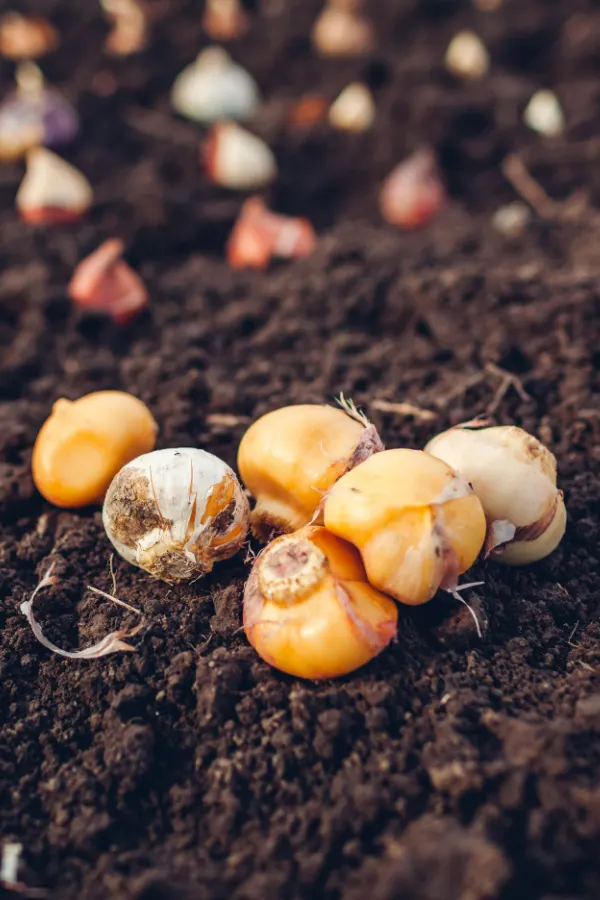
Add a few inches of compost into the hole and then place the bulb in with the pointy end facing up. This is where it will sprout and will speed its journey through the soil. Set the bulb down into the layer of compost as you plant.
You can also add a bit of bone meal to the planting hole if your soil is lacking in nutrients. Bone meal can aid in providing a bigger and more boisterous set of blooms. Finish by covering the bulb with a 50/50 mixture of soil and compost and lightly tamp down. Water thoroughly to complete the planting process.
Planting Allium In Containers – Planting Allium Bulb In The Fall
You can also plant allium in containers to provide early spring color anywhere. But when doing so, there is an extra step you should take during the winter. Containers and pots simply can’t provide enough protection against the freezing temperatures in the Northern climates during the winter.
For these plants, bring them indoors and store them in a location that is below 60º Fahrenheit. An unheated basement or garage works best. Once temperatures warm back up in early spring, you can place the plants back outside.
Caring For Allium Bulbs After Fall
Allium bulbs planted in the soil should be left alone over winter since they will go dormant in the colder months. In the early spring, allium will emerge with bright green foliage. The foliage will continue to fill in as the temperatures warm.
Most pests like squirrels and rodents will leave allium bulbs away when they are through the soil as well, once again making them a low-maintenance and low worry flower. (See, “How To Keep Your Fall Bulbs Safe From Squirrels, Mice & Other Rodents”)
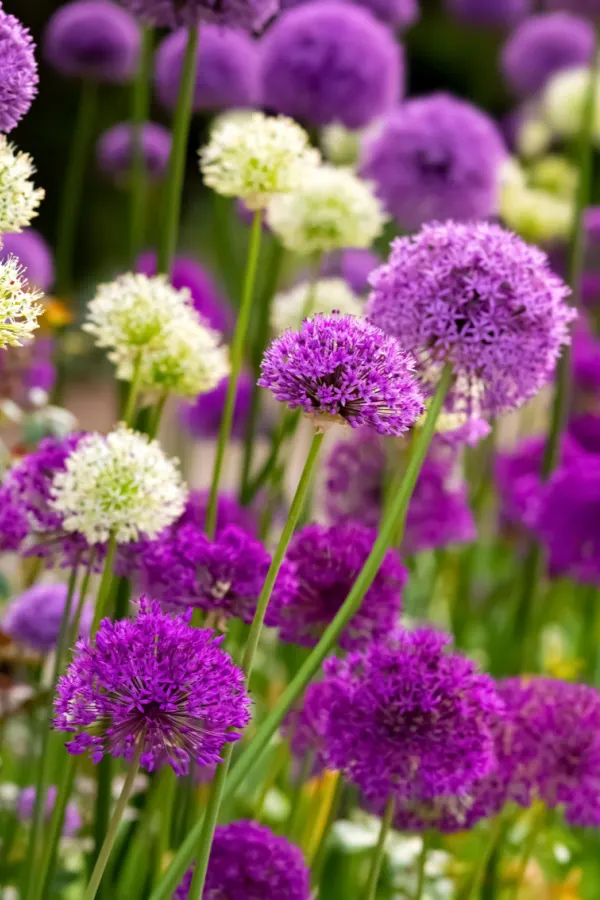
Eventually, a hollow green stem will shoot up with a single bloom on top. This can happen anytime from mid to late spring all the way to early summer. It can certainly vary from year to year depending on the weather.
Don’t be surprised if the low-lying foliage starts to yellow and brown before the allium even blooms. It is not a sign the plant is dying, just that it is using it’s energy now to set its bloom.
Basic Extended Care – Planting Allium Bulb In The Fall
Allium bulbs rarely if ever need watered. They can withstand extended dry periods and should only be watered in cases of serious drought-like conditions. In fact, allium bulbs actually suffer more from over-watering as opposed to under-watering.
Since you add compost when planting, fertilizing isn’t needed in the spring in order for allium bulbs to bloom. You do not need to add mulch either. Mulch can actually retain too much moisture and cause more issues for allium plants. A thin layer of an inch or so is fine, but not much more.
The blooms of allium flowers make great additions to indoor arrangements, fresh or dried. Cut the blooms when they are only a fourth of the way open to allow for longer storage.
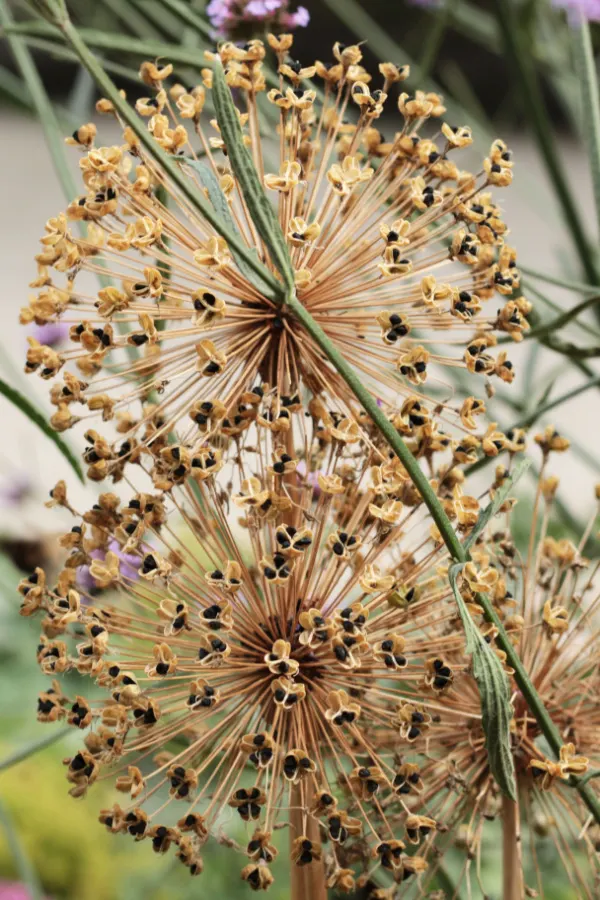
You can cut back the blooms of the allium plants after they start to fade, or you can leave them on the stems to dry out. No matter which you choose, do not cut the foliage. Allow the foliage to stay so it can continue to absorb sunlight and create energy for the bulb to store for next year’s bloom cycle.
You can remove the foliage in mid-summer or after it has completely died back. Here is to planting allium bulbs this fall – and to enjoying some incredible spring color next year!
Follow Our Facebook Page For Even More Great Tips! Simple Garden Life Facebook Page
Simple Garden Life is a website dedicated to keeping gardening fun, simple and enjoyable! We publish two new articles each week along with a new garden podcast episode every two weeks. This article may contain affiliate links.
